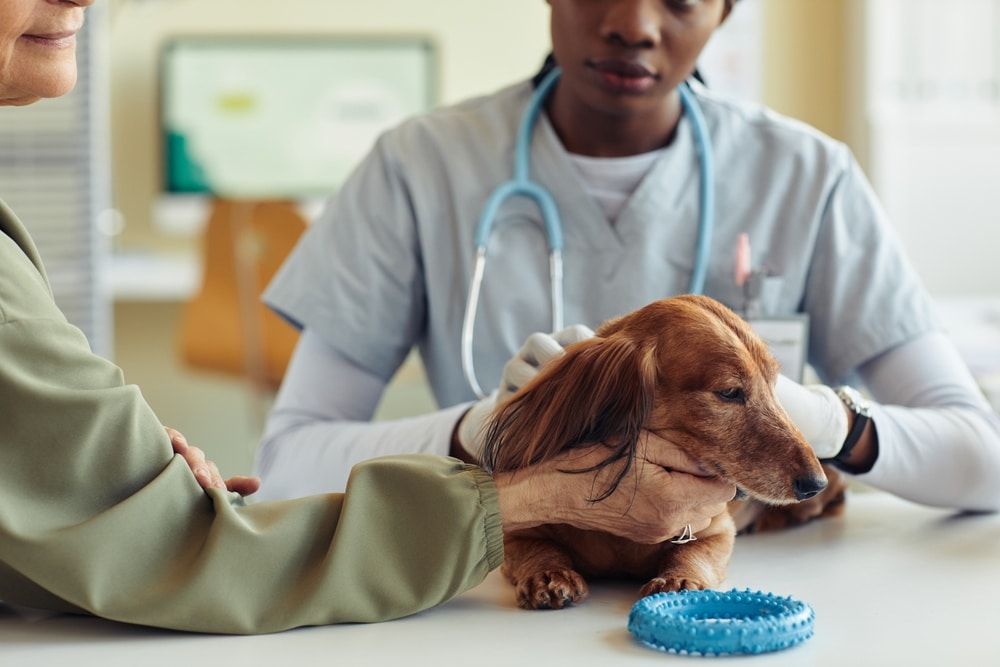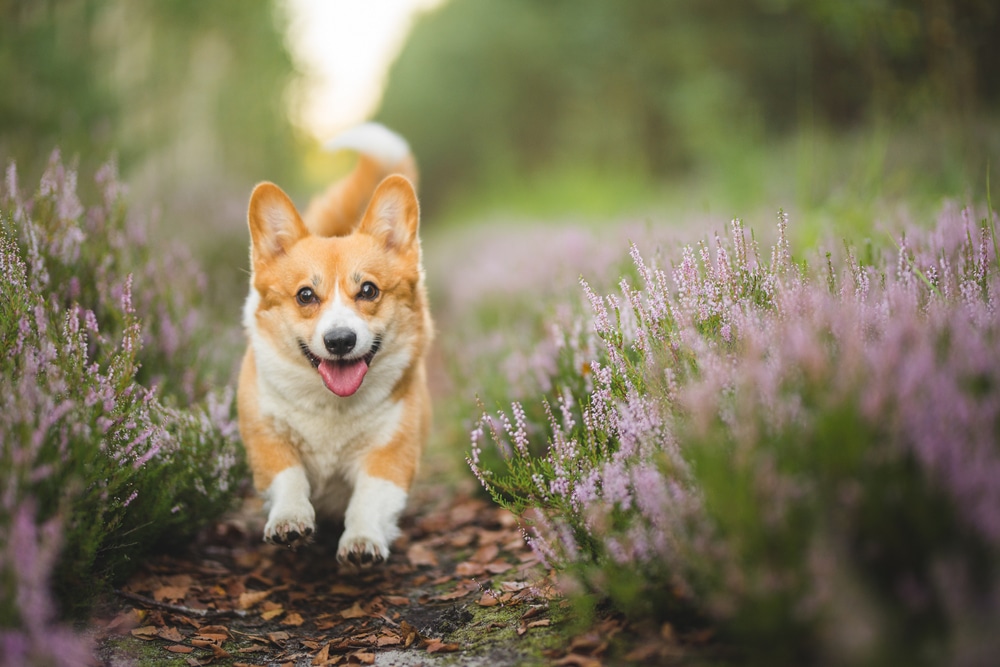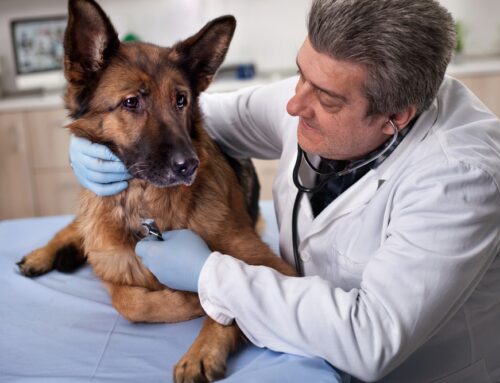Picture this: you and your dog are enjoying a sunny afternoon walk in Mesa, Arizona. The breeze is warm, the trail is quiet, and your dog is thrilled to be outside. But hours later, something seems wrong—your pet is licking a paw obsessively or shaking their head in discomfort. What happened?
The answer could be something small, sharp, and surprisingly dangerous: grass awns.
At Sonoran Sky Pet Hospital, we often see the aftermath of grass awn injuries. These tiny seed structures might look harmless, but they can cause serious pain and even life-threatening complications if left untreated. This guide will help you recognize, respond to, and prevent grass awn injuries so your pet can stay safe while enjoying the outdoors.
What Are Grass Awns?
Grass awns are sharp, barbed seed heads produced by certain grasses, such as foxtails. These seeds are designed by nature to hitch a ride—on animals, shoes, or clothing—and embed themselves in new soil to germinate. Unfortunately, when they latch onto your pet’s fur, they can also pierce the skin, migrate internally, and trigger infections or worse.
Common grasses that produce awns include:
- Foxtail barley
- Wild rye
- Cheatgrass
Arizona’s dry terrain is especially conducive to these grasses, making grass awns a seasonal hazard for local pets. Learn more about why they’re such a risk in this AKC guide on foxtails.
Why Grass Awns Are Dangerous
Grass awns are not just irritating—they are biologically engineered to move forward, not backward, meaning once they embed in your pet’s skin or enter a body cavity, they can burrow deeper with every movement.
How They Enter the Body
Grass awns commonly penetrate through:
- Paws and toes
- Ear canals
- Eyes and eyelids
- Nostrils
- Genital areas
- Open wounds or thin-skinned areas
Once inside, they can migrate through tissue, forming abscesses or traveling to the lungs, spine, or abdominal organs, where they’re nearly impossible to locate without advanced imaging or surgery.
How to Spot a Grass Awn Injury
Early detection is crucial. Here’s what to watch for:
Subtle Symptoms (Early Stage)
- Persistent paw licking or limping
- Head shaking or ear scratching
- Sneezing or nasal discharge
- Squinting or eye discharge
- Small swelling or redness on the skin
Advanced Symptoms (Immediate Attention Required)
- Difficulty breathing or frequent coughing
- Fever, lethargy, or decreased appetite
- Non-healing wounds or draining tracts
- Behavioral changes such as hiding or sudden aggression
If you see these signs, contact us right away. Grass awns can escalate quickly and silently.
How We Diagnose and Treat Grass Awn Injuries
At Sonoran Sky Pet Hospital, we combine compassionate care with advanced diagnostics to identify and address grass awn injuries.
Diagnostic Process
- Visual Exam: A thorough check of common entry points
- Otoscope Exam: For ear canal inspection
- Imaging: X-rays or ultrasound to locate migrating awns
- Lab Testing: Bloodwork to detect systemic infections
Treatment Options
- Conservative Treatment: Topical care, antibiotics, pain management for surface injuries
- Manual Removal: Awns that are visible and accessible may be gently extracted
- Endoscopy or Surgery: For deeply embedded awns, especially in the lungs, sinuses, or abdomen
Complications of Untreated Awns
- Localized abscesses and chronic infection
- Internal migration to vital organs
- Sepsis, osteomyelitis, or even death in severe cases
Prevention: How to Protect Your Pet
Before the Walk
- Avoid areas with tall, dry grasses or overgrowth
- Walk on paved trails or groomed paths during peak foxtail season (late spring through summer)
- Use products like: Protective Foxtail Gear- Outfox for Dogs
After the Walk
- Perform a full-body inspection
- Pay special attention to paws, between toes, ears, and under the tail
- Use a brush to gently remove debris from fur
Grooming Tips
- Keep long-haired breeds trimmed around paws, ears, and belly
- Bathe regularly to dislodge hidden awns
- Learn more about grooming as a preventive tool in ASPCA’s guide to pet grooming
At-Home Monitoring and Maintenance
- Paw Care: Wipe paws after walks and check between digits
- Ear Hygiene: Clean ears with vet-approved solution; avoid deep cleaning or cotton swabs (see Cornell’s ear cleaning guide)
- Comfort Measures: Provide a soft place to rest and monitor for signs of discomfort
Don’t forget the emotional impact on you as a pet owner. Grass awn injuries can be stressful and costly. Open communication with your vet and proactive care are key.
Unusual Cases and Ongoing Research
Though rare, some grass awns migrate to highly sensitive areas:
- Spinal cord (causing neurological symptoms)
- Heart or lungs (leading to coughing, wheezing, or collapse)
Veterinary researchers are studying new diagnostic tools—including thermal imaging and targeted ultrasound—to catch migrating awns earlier and more accurately.
Some dogs may benefit from cooperative care techniques that make ear checks and paw handling less stressful for both pets and owners.
Preparing for Your Vet Visit
Come prepared to help your vet assess the situation efficiently:
Bring With You:
- A record of symptoms and when they began
- Any removed awns or foreign material
- Video or photos of symptoms (e.g., limping, sneezing)
- List of medications or supplements
Ask Your Veterinarian:
- “Do we need imaging to locate the awn?”
- “What treatment options do you recommend?”
- “How can I prevent this from happening again?”
- “What should I do if I can’t see the awn but suspect it?”

FAQs About Grass Awns
Q: Can grass awns kill my dog or cat?
Yes, if left untreated, they can cause fatal infections or damage to internal organs.
Q: Are cats affected by grass awns too?
Absolutely. Outdoor cats are particularly vulnerable to awns in their paws, ears, or eyes.
Q: Can I remove an awn at home?
If it’s on the surface of the fur, yes. But if it’s embedded or causing symptoms, see a vet immediately.
Q: When is foxtail season in Arizona?
Typically late spring through summer, though dry conditions can extend the season.
Still want to learn more? Check out this Preventive Vet guide.
Your Partner in Preventing and Treating Grass Awn Injuries
At Sonoran Sky Pet Hospital, we understand the anxiety and confusion that can come with a grass awn injury. We’re here to offer answers, treatments, and—most importantly—peace of mind.
If your pet is showing symptoms or you just want to talk through prevention strategies, contact us directly. We’re here to support your journey, every step of the way.









Leave A Comment